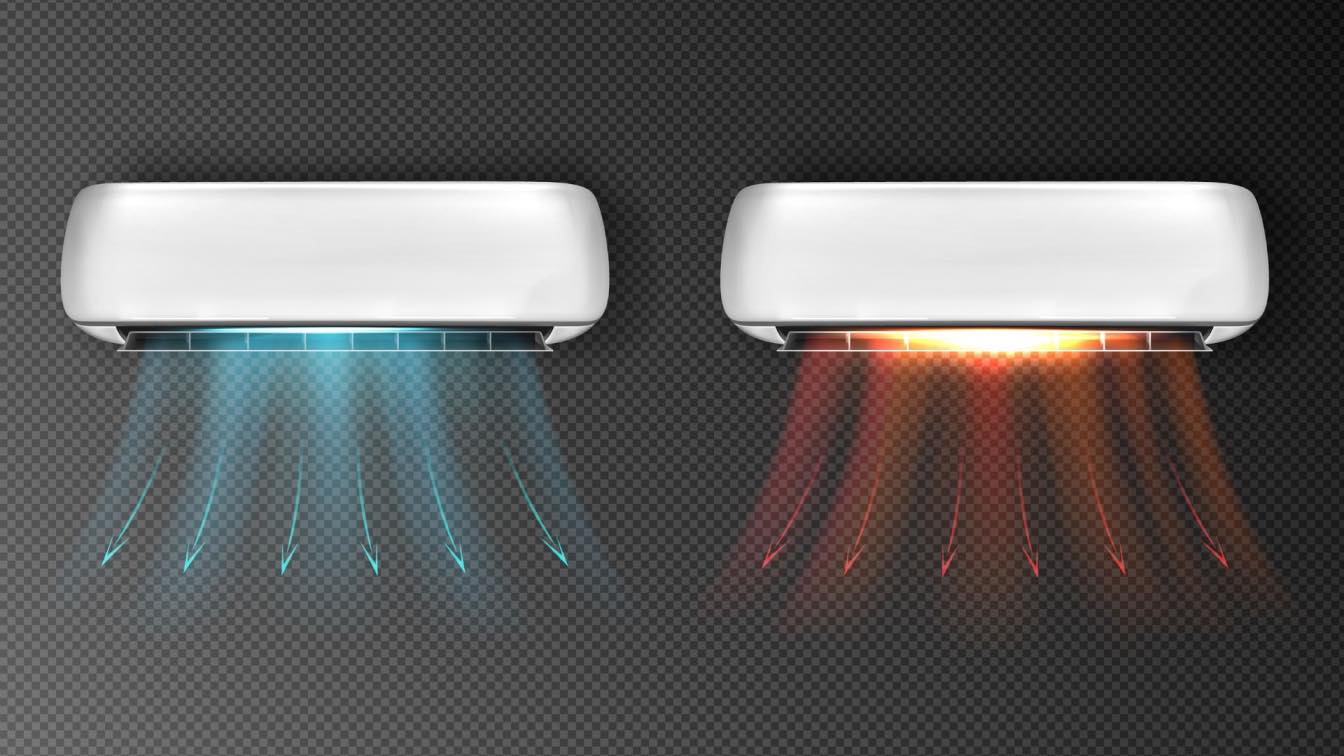Walla Air Conditioners
The essence of energy-efficient cooling lies in the graceful balancing act of nurturing an idyllic indoor climate while keeping the energy appetite of your air conditioner on a tasteful leash. This conservationist approach promises benefits twofold—a shrinking carbon footprint and leaner energy bills. Wall air conditioners rise to the occasion brilliantly in achieving this equilibrium.
Benefits of Wall Air Conditioners
Couched within the realm of cooling solutions, wall air conditioners rise as formidable contenders to classic window units and expansive central HVAC systems. Their magnetism takes root in a bouquet of virtues that elevate them to an enviable position in the cooling world.
Optimising your aircon by setting up a programmable thermostat can help you save on energy costs during the summer. Regular maintenance is essential for optimising your air con's performance and extending its lifespan. These units are particularly beneficial for smaller spaces or rooms where centralised cooling may be excessive. They offer the flexibility to cool only the needed areas, further enhancing energy efficiency.
Energy Efficiency in Cooling
The tapestry of energy efficiency in cooling weaves an intriguing narrative of sublime air conditioning, where the protagonist achieves an idyllic indoor respite, drawing artfully from scant energy reserves.
Higher ratings suggest better efficiency. Choosing a unit with high EER and SEER ratings can significantly reduce energy consumption, especially in the long run. Proper insulation and sealing around the team can also enhance efficiency by preventing cool air from escaping and warm air from entering your home.
Types of Wall Air Conditioners
The colourful spectrum of wall air conditioners parades an impressive variety to cater to enviable individualism and situational uniqueness. With open arms, let's welcome the rich diversity of wall air conditioners that grace the Australian stage of the cooling world.
Through-the-Wall Units:
Alternatively christened as in-wall air conditioners, these steadfast devices find their home squarely in the heart of an exterior wall. They cater to the discerning audience yearning for a cooling companion in it for the long haul. Let's take a peek behind the curtains:
Installation: The essence of their charm is their seamless integration into the wall's canvas, recessed enough to be flush with interior and exterior landscapes. The critical coup de grace during this instalment is the perfect seal that prevents breezy jailbreaks, ensuring the unit's cooling magic remains within the cherished confines of your space.
Benefits: Through-the-wall units are relatively easy to install, provide efficient cooling, and are suitable for cooling single rooms or small spaces. They don't take up window space, leaving more room for your furniture and decor.
Ductless Mini-Split Systems:
Ductless mini-split systems are another popular type of wall air conditioner. They consist of an indoor unit and an outdoor condenser connected by refrigerant lines. These systems offer more flexibility and efficiency:
Installation: The indoor unit is typically mounted high on the room's wall, and the outdoor condenser is placed outside. They are connected through small refrigerant lines, which require a small hole in the wall for installation. Professional installation is often recommended.
Benefits: Ductless mini-split systems are highly flexible and can cool multiple rooms with a single outdoor unit. You can control each indoor unit independently, enabling zoned cooling and ensuring efficient and consistent comfort.
Packaged Terminal Air Conditioners (PTACs):
PTACs, or Packaged Terminal Air Conditioners, form a guild of esteemed cooling knights, often lavishing their breeze in commercial highlands and cozy hotel rooms. They stand as solitary warriors, housing an arsenal of cooling components within their compact shell—a testament to brilliant design.
These proficient cooling virtuosos, sheltering the whispering evaporator and the diligent condenser within their confines, hold court amidst walls and windows. With versatility as their trusty steed, they are equipped for a boundary-transcending installation, bridging spaces while delivering rivulets of refreshing air.
Installation: PTACs are relatively easy to install, making them a suitable option for hotels and rental properties. They can be mounted through a wall or placed in a window.
Benefits: PTACs are self-contained and do not require an outdoor condenser unit. They offer individual climate control in each room, making them suitable for hotel rooms and apartment complexes.
Considerations: PTACs may not be the most energy-efficient option compared to ductless mini-split systems. They are also bulkier and may limit the view through a window when installed.
Vertical Wall Air Conditioners:
Designers create vertical wall air conditioners to fit into narrow spaces, and they frequently use them in corridors or areas with limited wall space. They come in a slim, vertical shape that can be mounted high on the wall.
Installation: These units are designed to fit into tight spaces and can be wall-mounted easily. The vertical design is ideal for spaces with limited horizontal wall space.
Benefits: Vertical wall air conditioners are space-efficient and provide cooling in areas where other units may not fit. They are particularly suitable for hallways, entryways, or small storage rooms.
The invocation of the apt wall air conditioner is a composition delicately harmonised to the rhythm of your unique cooling symphony and the architectural melody of your space.
Top Energy-Efficient Wall Air Conditioner Models
There are several leading brands and models known for their energy efficiency in the Australian market. These include models from reputable companies like Mitsubishi Electric, Daikin, Fujitsu, and Panasonic. Each brand offers a range of wall air conditioners with varying features, energy ratings, and cooling capacities.
Mitsubishi Electric, for instance, is renowned for its energy-efficient ductless mini-split systems, known for their quiet operation and advanced technology. Daikin and Fujitsu also offer high-quality wall air conditioners with excellent energy efficiency ratings. It's essential to compare the features, ratings, and cooling capacity of these models to find the one that best suits your needs and budget.
The Excellence of Wall Air Conditioner
In conclusion, wall air conditioners are an excellent choice for energy-efficient cooling in Australian settings. Their benefits, including cost-effectiveness, space-saving attributes, and high energy efficiency, make them a compelling option for keeping your space comfortable during hot seasons. Professional air conditioning installation and regular maintenance, ensuring the unit operates at its best.





